Wondering if a Happy Planner Could Be the Right Choice for Your Next Planner? Check Out This Honest Classic Happy Planner Review and Find Out All the Details That Will Help You Make Up Your Mind.
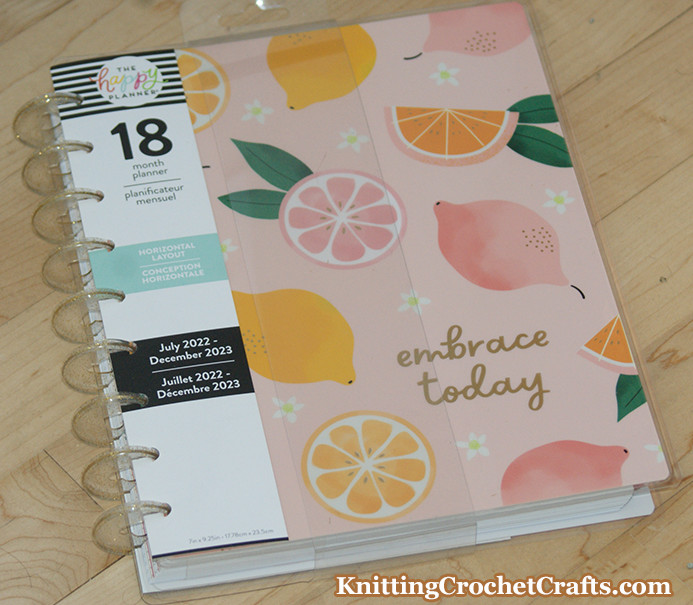
Classic Happy Planner
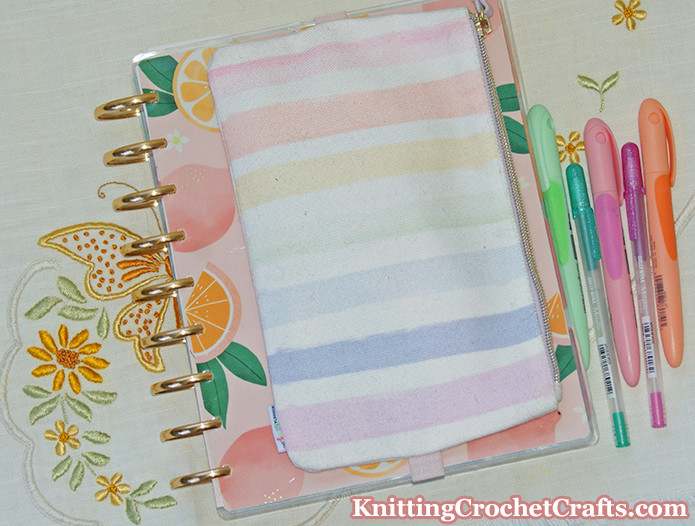
This is the same Classic Happy Planner you see pictured above, but I customized it with an accessory pouch and gold metal expander discs.
What Is the Classic Happy Planner?
The Classic Happy Planner is a customizable discbound planner manufactured by a company known as “Me & My Big Ideas” (affectionately nicknamed “MAMBI” for short). The Classic Happy Planner is part of a popular and widely available product line that also includes stickers, clear stamps, punches, washi tapes, planner covers, dividers, dry erase / wet erase dashboards, pen pouches, box kits and other office supplies. The Happy Planner brand has countless loyal fans who enjoy using these planners and coordinating supplies.
Perhaps you’ve never used a Happy Planner, and you’re wondering whether a classic sized Happy Planner could be right for you. If that’s your situation, this Classic Happy Planner review is intended to help you make up your mind. Below, we get into the details of what a Classic Happy Planner is, why you might want one, and what the downsides to this planner are. We hope you’ll find the information helpful.
The Happy Planner’s Discbound System Is One of Its Primary Advantages
The Happy Planner binding system is an innovative discbound system. What that means: Instead of notebook-style binder rings that snap open and closed, or instead of a spiral binding, the Happy Planner is bound with round discs. Some of the discs are plastic, and some are metal. The discs I’ve seen from this brand all have designs in the center — perhaps hearts, rainbows or Disney-branded Mickey Mouse head and ears. The discs are available in different sizes.
The discs are just one possible way of customizing your Happy Planner. Each Happy Planner you buy comes with its own set of discs; if you don’t like the discs you get with the planner, you can remove them and put in different discs in their place.
The Happy Planner’s disc binding gives you all the advantages of a spiral binding, without the major disadvantages. Namely, the Happy Planner can be made to lie flat on the table and stay open to the right place without you holding it in position; and you can also fold it back onto itself to easily keep it open to exactly the day you need.
The discbound system gives you options that a spiral binding does not. One of the best things about the discbound system is that you can remove pages from your planner and then later put them back in without any problems. You can also move pages from one place in the planner to another. So for example, let’s say you spend 4 hours writing out your chores list or your list of long-term goals. Instead of having to constantly re-write that page, you can simply pull the page out and update its placement in your planner every day.
Or let’s say that you write out your grocery list in your planner, but you don’t want to carry your entire planner around the grocery store. You can remove that page from your planner, and then take it to the grocery store with you.
If you make notes on the same page about what you actually buy and how much you spent, later, after you’re done shopping, you can move that page back to the meal planning section of your planner and use it to help you with your meal planning for the week. Or you can move it back to the budgeting section of your notebook so it can help you jog your memory on how you spent your grocery money.
If you meal prep or budget, imagine the massive time savings you’ll enjoy, just because you can save so much time by moving pages around rather than re-writing bunches of information. For me, this has been a HUGE game changer!
All Happy Planners, including the Classic Happy Planner, share these design features.
For me, the discbound system alone was enough to sell me on the Happy Planner. I’m a longtime user of planners; in the past, after having tried some other types of bindings, I always insisted on having a spiral binding on my planner – but I’m finding that the discbound system is a big improvement over that.
For me, the years that I have used planners with notebook-style ring binders or regular hardbound planners were disastrous. I learned one important thing: I absolutely NEED to be able to leave my planner open to the right page so that when I return to it, I am in the right spot to continue using it. If I have to mess around with opening it up and finding the right place, that not only wastes time, but it also has the potential to derail my entire day with distractions (because if it isn’t easy to open up the planner and get started on my to-do list, I don’t always get to that right away, and before you know it, half my day is wasted.)
I found that even a hardbound planner with a bookmark did not help. I have to use a planner that can be folded over onto itself and left open at the right spot.
My organization system requires me to end my workday by reviewing the day’s wins and failures and by making and prioritizing a new to-do list for the following day. I leave my planner open, with the new to-do list front and center. When I’m ready to start work for the day, if my planner is at my workspace and open, I can sit down and get right to work on my to-do list. I have a goal of finishing at least my top priority first thing in the morning before I talk to anyone or do anything else. While I don’t always succeed at that, attempting it does help keep me focused and on-track to maximize my productivity.
You might not realize that little things like this can make a huge difference in your life. I didn’t realize it until I took the time to analyze why it is that I can be so productive sometimes and so unproductive other times. For me, it came down to having a planner that can be left open to exactly the right spot; that is one little thing that makes a massive difference in my efficiency and productivity.
I am finding that the Happy Planner’s discbound system offers a MASSIVE LEAP UPWARDS in productivity from my usual spiral-bound planners. This is because I can leave my Happy Planner open like a spiral-bound planner, but it also allows me to move pages around – which saves me significant amounts of time in tracking the chores I need to do and the long-term goals I want to focus on. I couldn’t be more thrilled!
So I am now among the sizable numbers of raving Happy Planner fans. And that doesn’t even tell you about any of the other wonderful benefits of the Happy Planner system.
More Classic Happy Planner Pros
There are many things you’re likely to LOVE about the classic Happy Planner:
- You’ll find many design options and themes to choose from; some are colorful, some are pastel, some are black and white, some are designed in cool color schemes, and others are designed in warm color schemes. You are sure to find a planner colorway that works for you.
- Many options and extra accessories are available for customizing your Classic Happy Planner. Need a planner that offers space for shopping lists and budgeting? Perhaps you’re planning a wedding, and you need an everyday planner that can also double as a wedding planner. Or maybe you’re trying to lose weight, and your planner has to help you track your diet and fitness goals. Or maybe you’re a student who needs to keep track of classes and afterschool activities. Or maybe you want a spot to track your Bible reading, prayer requests and church / temple activities. The classic Happy Planner can be customized for all of these goals – and for others, too.
- Happy Planners are refillable. You do not need to buy a new Happy Planner every year (although you can if you want to).
- You can customize your Happy Planner’s discs. If you don’t like the material, color or size of your Happy Planner’s discs, you can buy different ones and exchange them for ones that will meet your needs better. If you add bunches of expansion packs to your planner, you’ll definitely appreciate having the option to buy larger, expanded rings.
- Many sticker books are available to help you easily beautify your Happy Planner. Even if you don’t think of yourself as being artistic, you can make your planner look like a work of art, simply by using some of the stickers that are available for the Happy Planner. With the sticker packs, you can easily add beautiful artwork, habit trackers, bulleted lists, motivational quotes, or colorful reminders to your Happy Planner.
Classic Happy Planner Cons
The Vertical Layout Is Too Skinny
Classic Happy Planners are not all precisely alike, so they have slightly different pros and cons. My first Happy Planner was a design with a vertical layout. This seems to be a popular layout, as a high percentage of Happy Planner’s releases are designed with this layout – but I’m personally puzzled as to how this particular layout is so popular. I’m a longtime, hardcore planner user, and as far as I’m concerned, this layout in the classic-sized planner is WAY TOO NARROW.
If you have microscopic handwriting, perhaps this won’t be an issue for you. I tend to have large, loopy handwriting. I can’t even easily fit one average word in the Happy Planner vertical layout.
I have seen examples where people who use Happy Planners as art journals have rotated their planners by a quarter turn before doing their journaling, thus writing their journal sideways in the planner to take best advantage of the space offered. To my way of thinking, this is clever, but it is not ideal.
However, this issue is NOT a deal breaker, because Happy Planners come in different layouts other than just the standard vertical layout. A couple of the best alternatives are the horizontal layout and the dashboard layout. There are also some really wonderful daily layouts that give you ample space to write.
Bottom line, I enthusiastically recommend Happy Planners overall, but I do not personally recommend getting a classic Happy Planner with a vertical layout. On the one hand, I think this is a matter of personal preference – but on the other hand, if you are new to planners, and you don’t really know yet what you want in a planner, I am here to tell you that the Happy Planner vertical layout is not at all optimum for organizing your time. You will spend too much time fussing over how to make your information fit into the layout, which pretty much defeats the purpose of using a planner. If you want a vertical layout, and you have large handwriting, you might want to take a look at the Big Happy Planner. The vertical layout on the large-sized Happy Planner has more space to write in than the Classic Happy Planner does.
Some (Not All) Happy Planners Come With Plastic Discs That Are Extremely Fragile

Happy Planner Gold Metal Discs by Me & My Big Ideas
Another con that I need to mention is that some Happy Planners come with fragile plastic discs. My advice would be to either choose a Happy Planner that comes with metal discs – or, if you buy a Happy Planner that comes with plastic discs, pull those off and upgrade them to metal discs. You have options for lots of different colors of metal discs, plus you also have options for multiple ring sizes. You can opt for large discs if you want your planner to hold more than just the standard calendar pages and weekly pages. This is a really handy feature the Happy Planner system offers, and it’s one of the reasons I so enthusiastically recommend this innovative system.
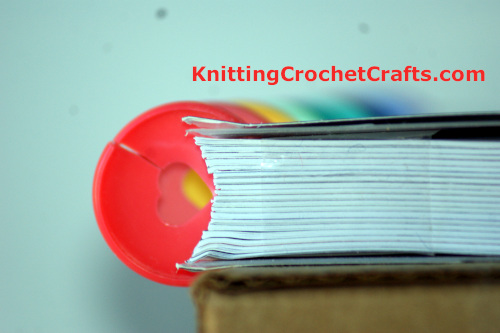
Cracked Plastic Disc on Archetypes Happy Planner
I’m not a fan of the plastic discs at all, although I do love the pretty options for rainbow plastic discs. I recently purchased a Happy Planner as a gift for a friend. This was a classic-sized planner that had beautiful, colorful plastic discs in a rainbow of shades. The only problem was, a couple of the discs were broken when I opened the box.
I had also purchased punches to go with the planner, and the punches are heavy; the punches had apparently damaged the planner discs in transit. What a bummer!
If you buy a Happy Planner with plastic discs, it’s probably a good idea to grab an extra set of discs so you have replacements on hand when you inevitably break a disc.
If you’re prone to accidentally dropping your planner, it would definitely be wise to upgrade your planner discs to metal ones.
Happy Planner Fill Paper Can Get Expensive, But You Can Beat That Expense by Investing in a Happy Planner 9-Hole Punch
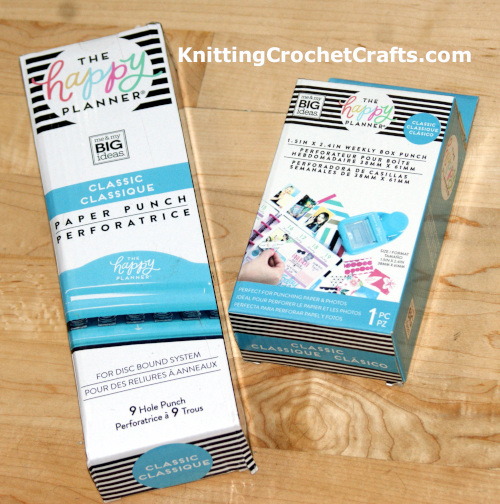
Happy Planner Punches: Pictured at left is the Classic Happy Planner 9-Hole Punch, and on the Right is the Classic Happy Planner Weekly Box Punch
You can use your Happy Planner as a notebook: a big plus! But the downside is that the fill paper for it can be pricey as compared against the fill paper for an ordinary notebook. Buying a big pack of notebook paper for an ordinary notebook will ordinarily cost you less than $3. In comparison, buying a smaller pack of fill paper for your Happy Planner is likely to cost upwards of $7, depending which paper design you buy and where you buy it from.
You might wonder why there’s such a price difference between notebook paper and Happy Planner paper. I’ve analyzed this, and I came to the conclusion that there are a few reasons for the discrepancy. The first is that Happy Planner fill paper pages are often printed in color – which makes them more enjoyable to use than regular old filler paper, but there is no getting around the fact that color printing is expensive.
Another reason is that Happy Planner paper tends to be much thicker and nicer than ordinary fill paper. You’ll appreciate the nicer paper if you are planning your days using colorful markers and a color-coding system – because your markers are less likely to bleed through on Happy Planner paper than they are to bleed through on ordinary notebook paper. But if you’re just writing out grocery lists using an ordinary ball-point pen, the heavier, nicer paper in the Happy Planner might be overkill.
One more thing is that the Happy Planner gives you options for fill paper layouts like dot grids and organized to-do lists that you don’t have with regular notebook paper. This is a significant advantage if you need those things.
But at times when you just want cheaper, not-so-nice paper to use for mundane tasks, you can help to defray some of the costs of refill paper by investing in a Happy Planner 9-hole punch. This punch allows you to take just about any ordinary weight of paper and punch a discbound edge onto that paper. Once you’ve punched the discbound edge, you can add that paper to your Happy Planner in whatever spot you want it.
I just got a Happy Planner punch, because I want to be able to customize the pages that I add to my Happy Planner. I have a lot of old scrapbooking paper on hand that I am never going to use for scrapbooking, so I am hoping to punch those pages using my Happy Planner punch and add them to my Happy Planner.
It is on my to-do list to try punching a stack of ordinary notebook paper and try adding that to my Happy Planner, too. I am not sure how that will work out; I already have reservations that notebook paper might turn out to be too flimsy. But it is on my to-do list to try it and see what will happen. Either way, once I get around to that, I will report back and let you know how it goes.
I started with a pack of ordinary college-ruled notebook paper and cut about 30 sheets of this notebook paper down to the size of my Classic Happy Planner. Then I punched all the notebook paper pages with the Happy Planner 9-Hole punch to give them the edge needed for inserting onto the Happy Planner discs. I added this paper to my Happy Planner and then set about seeing how it would work out.
I tested to see if it would fall out, and it didn’t.
I tested to see if I could turn the pages, and I could.
Conclusion: Success!
This works fine in the short term. You can, indeed, add notebook paper to your Happy Planner.
However, I don’t think these added pages are going to hold up well in the long term.
I say this because I used a few of my pieces of notebook paper to write notes about keyword research I did for a series of articles I need to write. I have been moving these pages from one spot in my planner to another, and the discbound edges are starting to get creased and worn. In the long term, I don’t think they are going to hold together very well.
So I would say that, in cases where you need your planner pages to last a long time, you’d be better off buying the Happy Planner branded refill pages and using those. Or at least buying comparably high-quality paper if you plan to punch and add your own pages.
But you can successfully use ordinary notebook paper in your Happy Planner if you just need to write a grocery list, make notes or write something down in the short term — and if you go through a lot of paper, having this punch will save you a bundle on paper in the long term.
Classic Happy Planner FAQs
- Are Happy Planners Refillable?
- Do I Have to Buy a New Happy Planner Every Year?
- Do Happy Planners Start in January?
- Are Happy Planners sturdy?
- Should I get Happy Planner?
- What do I do with old Happy Planner pages?
Conclusion
So there you have it: That’s my review of the Classic Happy Planner.
To recap: I enthusiastically recommend Classic Happy Planners with metal discs and layouts other than vertical (i.e. horizontal, dashboard).
I’m personally less enthusiastic about the Classic Happy Planners with vertical layouts and plastic discs — because my opinion is that the vertical layout is too skinny and the plastic discs are prone to breaking. Therefore I suggest considering a Classic Happy Planner in a horizontal or dashboard layout OR a Big Happy Planner with a vertical layout if you want to make best use of the space you’re given on a page. I think you’ll get the best value for your money if you spend the small amount extra to buy a planner that has the metal discs. If you don’t do that upfront, I advise you to allocate money in your budget for eventually replacing your planner’s plastic discs.
But I’d say, if you’re considering the purchase of a Happy Planner, definitely get one. They cost more than the typical spiral-bound planner, but my opinion is they more than make up for the increased cost by boosting your productivity and saving you more time. A Happy Planner is definitely worth the money!
Where to Buy a Happy Planner:
There are many places to buy Happy Planners. If you want to buy online, there are two online stores I recommend:
- Click here to shop for Happy Planners at A Cherry on Top Crafts.
- Click here to shop for Happy Planners at Scrapbook.com.
- Daily Happy Planner Layout for April 21, 2023 Featuring Stamped Images by Graphic 45, Echo Park, Lawn Fawn and Others
- Purple Daily Layout for Happy Planner and Other Discbound Planners
- November Garden Journal Pages for Discbound Planners Including Happy Planner, Tul and Arc
- Happy Planner Horizontal Layout for January 6, 2023 from the Year to Shine Goals Sticker Book
- April Happy Planner Layout Featuring Graphic 45 Papers From the Time to Flourish Paper Pad
- Planners, Calendars, Journals and Organizers
- Travel Scrapbooking Ideas: How to Make a Travel Journal With Pictures
- Classic Happy Planner Review
- Do I Have to Buy a New Happy Planner Every Year?
- Clear Stamps: A Complete Guide With Ideas and Instructions for How to Use Them
- Stamping
- Collage Art
- Painting
- Drawing
- Illustration
- Paper Crafts
- Find our main directory of craft techniques and project ideas HERE.
There are also two stores I DO NOT recommend if you plan to buy a Classic Happy Planner with plastic discs: Michaels.com and Joann.com. I do not recommend them because, in my experience, they do not package items well enough to protect the fragile plastic discs on a Happy Planner from getting broken.
I bought a Classic Happy Planner guided journal from Joann. Soon after I bought it, that design sold out. When I received my guided journal, the discs on it were all smashed because whoever packaged it put it in a padded mailer with no extra padding.
I was super upset!
Joann stocks Happy Planner discs. I emailed Joann customer service and explained that I was unhappy because my guided journal had arrived with smashed discs and had not been packaged properly to protect the fragile plastic discs. I further explained that they were sold out of the guided journal that I had ordered, so I did not want to return it. I asked if they would be willing to send me a replacement pack of the discs.
I never received a response to the email.
In general, I love Joann stores and have had success buying other, not-so-fragile items from Joann.com. But I wouldn’t recommend buying anything fragile to be shipped from Joann.com. Their packaging is consistently poor. I’ve had other problems with stickers and scrapbooking paper arriving bent from them as well. When it comes to fragile purchases like these, I definitely recommend sticking with A Cherry on Top or Scrapbook.com.
A similar situation happened with Michaels. I ordered a planner with plastic discs PLUS my Happy Planner punch from Michael’s. They put these items in a box but did not include sufficient packaging material to keep the contents from shifting while in transit. The punch arrived safely, but some of the planner discs were smashed during shipping.
So if you want to buy Happy Planner online, I recommend buying from A Cherry on Top or Scrapbook.com; both companies consistently package carefully. In the unlikely event that you do have a problem with your order, both companies are very prompt with resolving problems (I have never had problems with my Happy Planner purchases from these companies, but I have run into other issues, several of which were my own error, and all of which were very quickly resolved).
Also, if you buy directly from the manufacturer’s store on Amazon, and your discs get smashed in transit, Me & My Big Ideas has a fantastic track record of sending replacement discs. You will have to email their customer service department, send them a picture of the damage, and give them some order info before they can help you. So you can feel confident in buying your planner on Amazon as well.
Over to You:
Do you have a Happy Planner? If so, has it boosted your productivity?
Do you have questions about the Happy Planner? If there are any important points I missed covering in this review, please let me know about it in the comments below.
Happy Planner Layout Ideas:
Find More Inspiration for Creating Your Own Planner Layouts, Journaling and Scrapbook Pages:
Posted By: Amy Solovay
This page was last updated on 10-7-2023
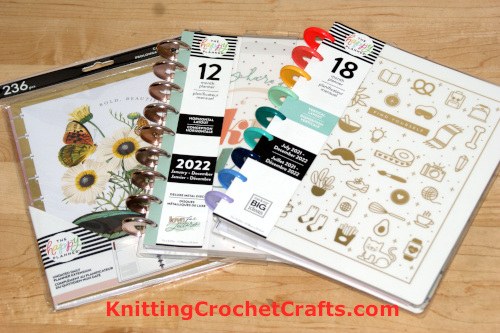
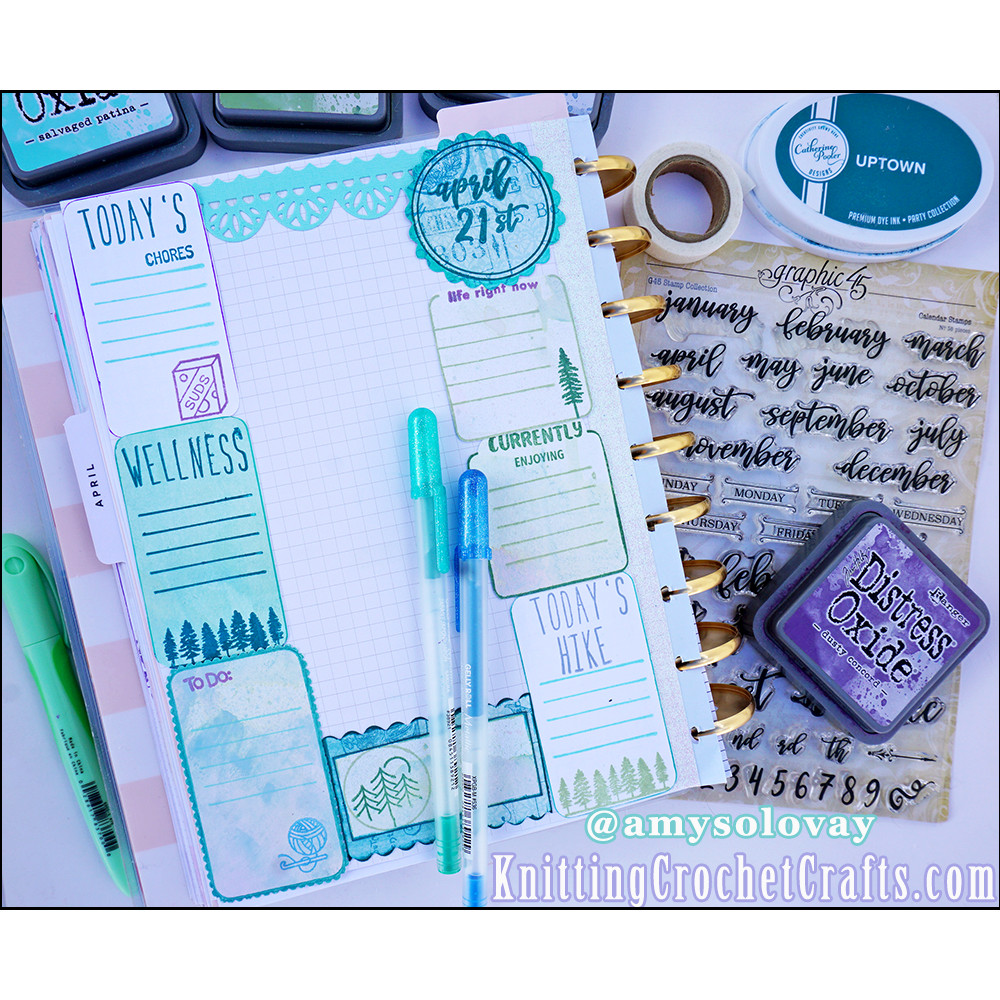


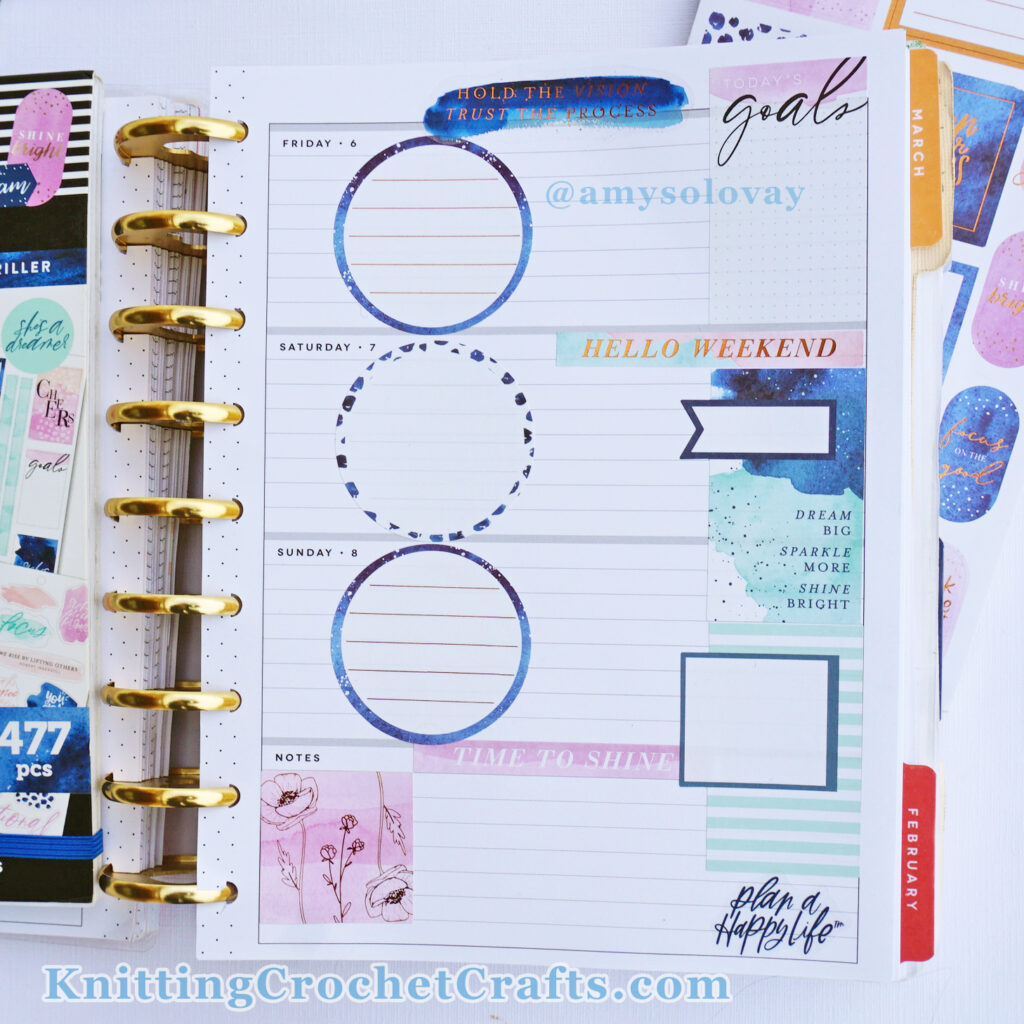
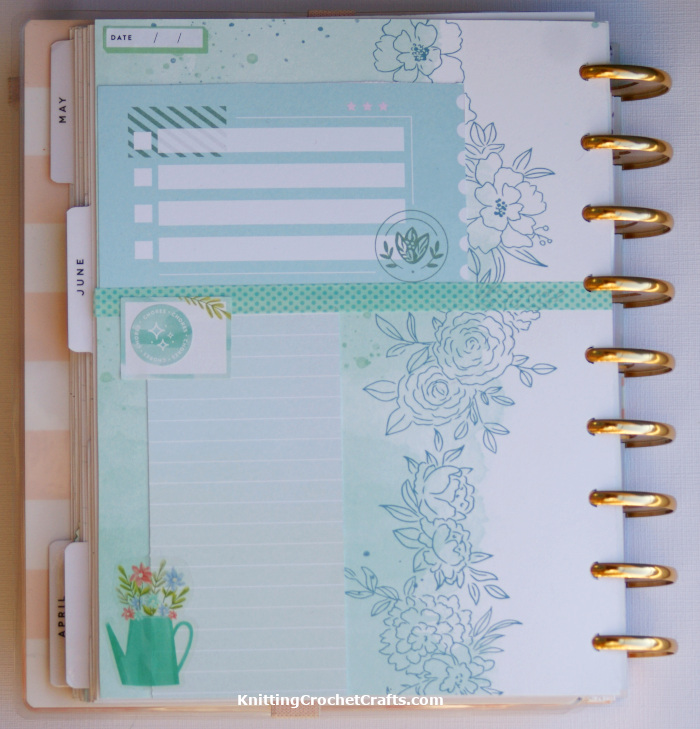

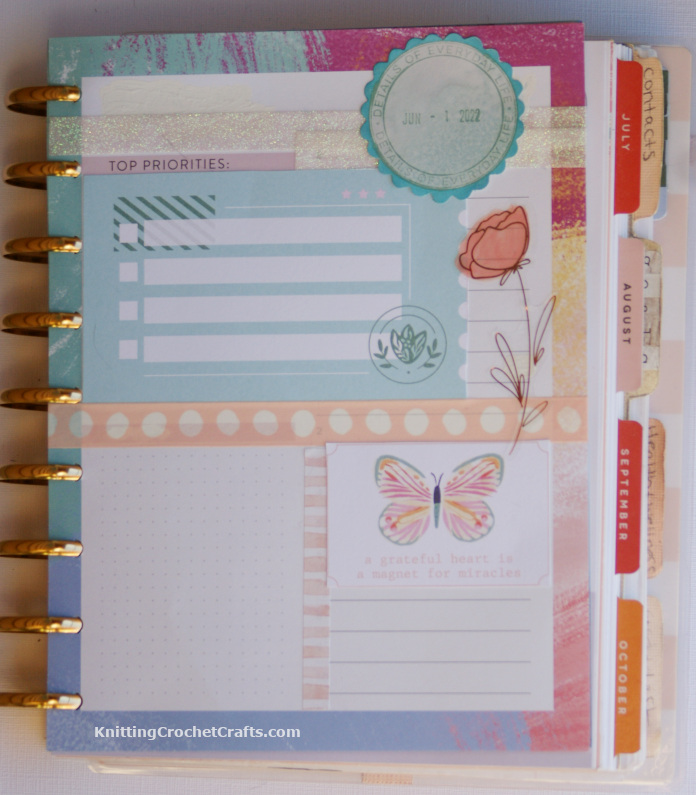
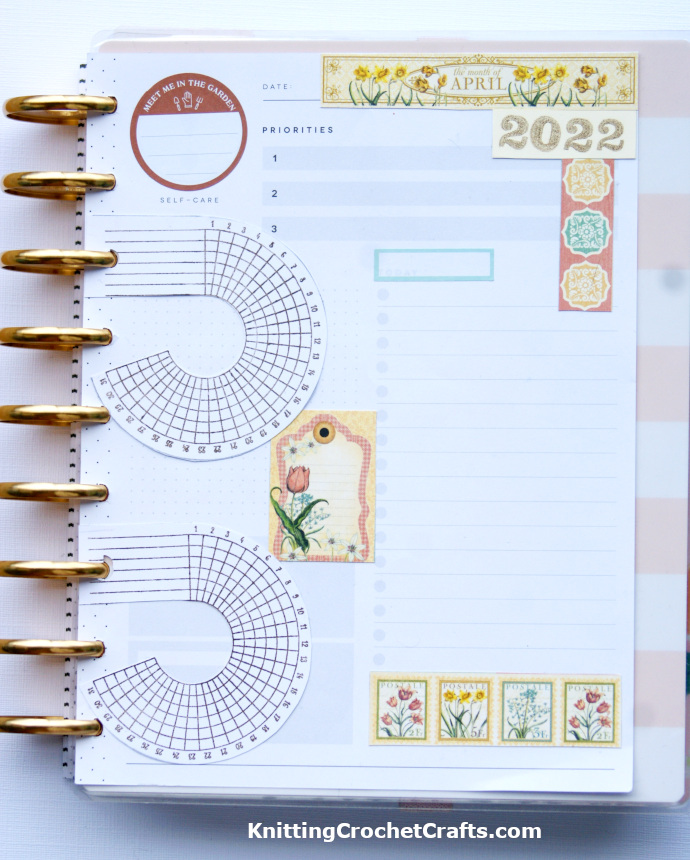
Thanks for the Happy Planner review. I want to get one, but haven’t done it yet because doing the math on all the stickers and inserts and other things I want for it, it all adds up to more than I really want to spend on a planner. I’m sure it’s worth it, I’m just on a tight budget right now because, university.
I keep seeing inserts I want to try for Happy Planner compatible printables on Etsy, but didn’t know how to actually put the inserts into the planner. I did not know about the punches until I just read your review. I wonder why printables sellers don’t mention that you need one of the punches to make the discbound edge? Thanks for the info — very helpful.
Hi Tiffany Ann! Thanks for the comment. I am glad you found the Happy Planner review helpful.
You DO NOT have to buy all the stickers and extras for the planner to be functional. It is fantastic that MAMBI makes the Happy Planner stickers available separately, so you can buy them, or not, as your budget permits. Love that!
I hope you’ve found a planner that works for you, even if it isn’t a Happy Planner. If there’s ever a time in your life when you need a really good planner to keep you on track, it’s when you’re at university. For me, keeping my planner updated was the key to academic success. I really wish Happy Planners had been around when I was in college, but the spiral-bound planners I used at the time were at least good enough to get the job done.